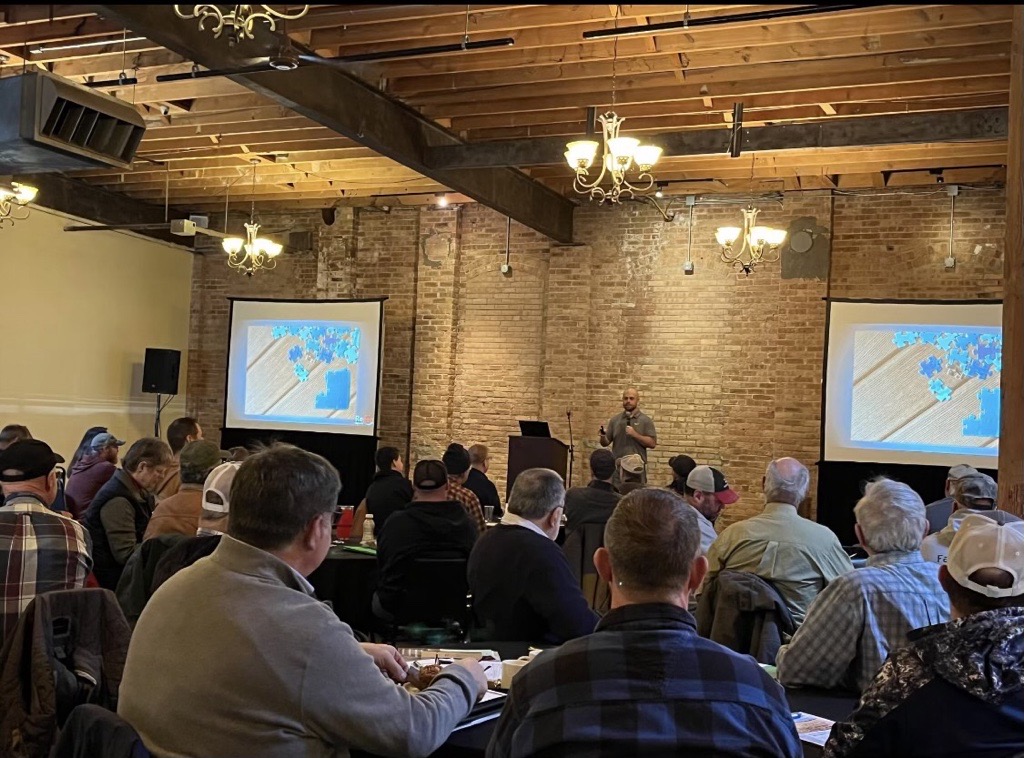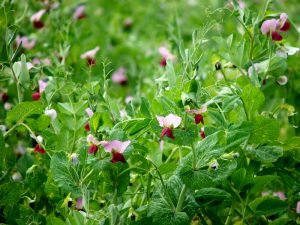
Wisconsin farmers interested in reducing local surface water pollution can join groups working toward that goal, such as the Sauk Soil and Water Improvement Group shown here. Credit: Anastasia Kurth.
Whom do you ask when you want to fix a problem in your house? Colleagues and neighbors are probably high on the list. For farmers wishing to address local environmental problems, nearby peers are a similar community. In Wisconsin, an example are producer-led watershed (PLW) groups that focus on the leading cause of nutrient pollution in U.S. surface water: agricultural runoff, or water that carries excess nitrogen and phosphorus from fertilized cropland and livestock pastures into drainage areas known as watersheds.
These groups began to form in 2016 due to a unique and innovative state program. It provides seed grant funding for collaborative efforts towards improving a region’s surface water quality through agricultural conservation practices. Soil scientists have documented their benefits, and cost-benefit analyses by economists can help decide whether or not to scale up such efforts.
To quantify the PLW program’s real-life impact for the first time, AAE professors Jeff Hadachek and Andrew Stevens teamed up with Montana State University’s Nicole Karwowski (AAE PhD’23).
“We found that a moderate increase in participation caused a 14% reduction of phosphorus levels in nearby surface water at a much lower cost than traditional federal subsidy programs,” says Hadachek. “This suggests that local, voluntary initiatives led by farmers may be more effective than centrally managed, uniform government regulations,” adds Stevens.
The PLW program of the Wisconsin Department of Agriculture, Trade and Consumer Protection (DATCP) includes groups ranging from 15 to more than 100 farmers, with a typical size around 50. Each group submits a grant application for specific conservation practices. Following proposal reviews, qualifying groups receive up to $40,000 per year. The total funding increased from $250,000 in 2016 for 14 groups to $1 million in 2023 for 43 groups, which represented one-third of the state’s total agricultural acreage.
Commonly proposed practices include reduced or no soil tillage; planting cover crops between the harvest and planting seasons; and rotating the three dominant crops in Wisconsin—corn, soybeans and small grains (wheat, barley and oats)—over the course of three years. Alternative cover crop options include brassicas, such as radish and turnips, and broadleaf legumes, such as clover and field peas.
The researchers assembled annual DATCP data on the total crop acreage and received funding per PLW group and the unique hydrologic identifier of its watershed. Next, they calculated average nitrogen and phosphorus readings at U.S. Geological Survey water quality monitors from March to June, when more than 75% of annual runoff occurs. Finally, the researchers obtained regional precipitation and temperature data and annual conservation practice acreages per watershed from 2015 to 2021. The final dataset included more than 38,000 observations.
The statistical analysis accounted for the fact that program participation is voluntary. This means that farmers may be more likely to opt in if they are interested in environmental conservation or if their local water quality is below average. The analysis ensured that any observed water quality improvements were due to the newly adopted conservation practices rather than other changes that may have occurred at the same time.
The researchers found that a 10-percentage-point increase in PLW participation caused a statistically significant 14% reduction in phosphorus levels of local lakes and rivers. The per-acre cost—$11.54 for cover crops and $4.19 for tillage reduction—was just 20% of traditional Department of Agriculture subsidies. In addition, notes Stevens, the state funding can be a catalyst for additional funds from nonprofit organizations and other sources that may boost the program’s benefits.

Since phosphorus particles adhere to soil particles, the reason for the observed benefit is that the conservation practices reduce sediment and solid runoff. In addition to erosion control, they also improve soil health by supporting microbial communities and reducing compaction. In contrast to a traditional two-year cycle of corn and soybeans, the groundcover plants used in the third rotation prevent nutrient runoff from bare fields during winter and early spring.
The researchers also observed modest reductions in nitrogen levels that did not reach statistical significance. “This is likely an underestimated benefit due to our focus on surface water,” explains Hadachek. “The same conservation practices reduce the amount of nitrogen that leaches into the soil and dissolves into groundwater, but nutrient measurements in groundwater were unavailable.”
For Stevens, who previously documented the role of mid-20th century peer networks in agricultural technology adoption, the study adds to the evidence that such networks are an important mechanism for behavioral change. “They can help farmers change the way they operate, whether it’s adopting innovative technology, normalizing a practice or learning from more experienced peers,” he says.
The team notes the potential of Wisconsin’s unique program to inform other states, such as Minnesota, Maryland and Pennsylvania. Even if the growth of new PLW groups in Wisconsin slows down, membership within existing groups is likely to increase since communication and policy strategies tend to improve over time.
Hadachek notes that many groups may have focused thus far on promoting and funding conservation practices that were familiar to them or convenient to implement.
“Now that the groups exist, we can assess their impact with more detailed surveys and compare the success of different practices with carefully designed experiments,” he says. “We may not know yet which practice works best in which setting and how to ensure that newly adopted practices persist over time, but we have an exciting opportunity to study these questions in the future.”